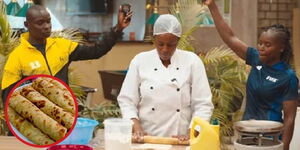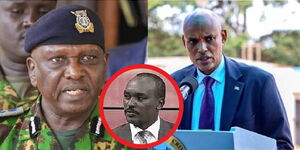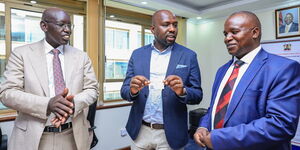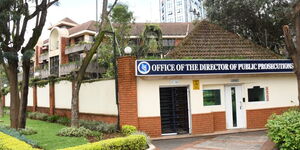The Supreme Court has determined that President-elect William Ruto met the 50 per cent plus 1 vote as stipulated in the 2010 Constitution of Kenya.
It further upheld his victory and subsequent declaration as the president-elect and incoming Kenya's 5th President.
Reading the judgement by the seven-judge bench on Monday, September 5, Chief Justice Martha Koome noted that the threshold was sufficiently achieved as announced by IEBC chairperson, Wafula Chebukati.
"We have found that the rounding off done by IEBC is correct. The petitioners did not also provide watertight evidence to show that none of the candidates met the 50 plus 1 requirement.
"We affirm that rejected votes cannot be added to votes cast when calculating whether the candidates meet the 50 plus 1 threshold," Koome stated.
With respect to allegations of voter stuffing in Ruto's stronghold, the apex court noted that the petitions did not sufficiently prove to the court that ballot boxes were stuffed in favour of Ruto.
"The petitioner did not produce any evidence to support the claim that there was any voter stuffing in Rift Valley and Mount Kenya region. We find therefore there are no major discrepancies in the number of votes cast for the presidency and that of the other elective seats," the court ruled.
During the hearing, the petitioners, in particular Okiya Omutatah, argued that none of the candidates met the 50 per cent plus 1 vote threshold.
In a PowerPoint presentation on August 31, the Busia senator-elect claimed that ghost voters were added to the number of total votes cast so as to achieve the 50 per cent plus 1 in favour of Ruto.
Omutatah explained that the over 500,000 votes were still transmitted through the KIEMS kit a day after polling stations were closed adding that Chebukati kept changing the voter turnout throughout the electioneering period.
“IEBC Chairman Wafula Chebukati announced that 14, 213,137 total votes were cast for all presidential candidates. The values and percentages attributed to all presidential candidates are fictitious.
“These figures are cooked. They worked backwards to achieve a certain figure, but, fortunately, in Form 34C, the incriminating evidence is seen. Since figures don’t lie, if the maths does not add up, then this court should quash the results,” activist Omutatah stated.
However, IEBC through its lawyer, Mahat Somane, stated that some of the kits transmitted results late as the devices had difficulties connecting to the network.
Additionally, the activist maintained that none of the candidates could attain the 50 plus 1 requirement whether rejected votes were added or removed from the number of valid votes.
“Voter turnout is the absolute value of the total registered voters participating in an election. Without the absolute value, percentages cannot be assigned to individuals participating in an election. And the absolute value cannot change in relation to anything else,” Omutata argued.
As per the Supreme Court ruling in 2013 and 2017, rejected votes cannot be considered in the tabulation of the percentages of the candidates as they are not valid.












